What is unique about your products? Why should customers buy them from you? What competitive advantage do your products possess?
These and many such questions are answered with your value proposition.
A top-notch value proposition can optimize your marketing strategies and increase your conversion rate. A solid value proposition can be read within 5 seconds, making it extremely important for businesses to remain competitive and help customers understand their company’s benefits.

What is a value proposition?
A value proposition is a statement that communicates a product or service’s unique benefits and value to its target audience. It’s a one or two sentences statement that highlights:
-
The specific problem the product/service solves.
-
The advantages it provides.
-
Why it is superior to its competitors.
A value proposition connects your business plan with the target market and plays an unspoken role in your marketing efforts. It provides customers with a reason to choose your products or services. Conversely, customers may inadvertently be drawn to your competitors who excel in marketing campaigns and present compelling value propositions.
Remember to distinguish value proposition from a company’s mission, tagline, or slogan. To better understand the difference, consider Microsoft as an example:
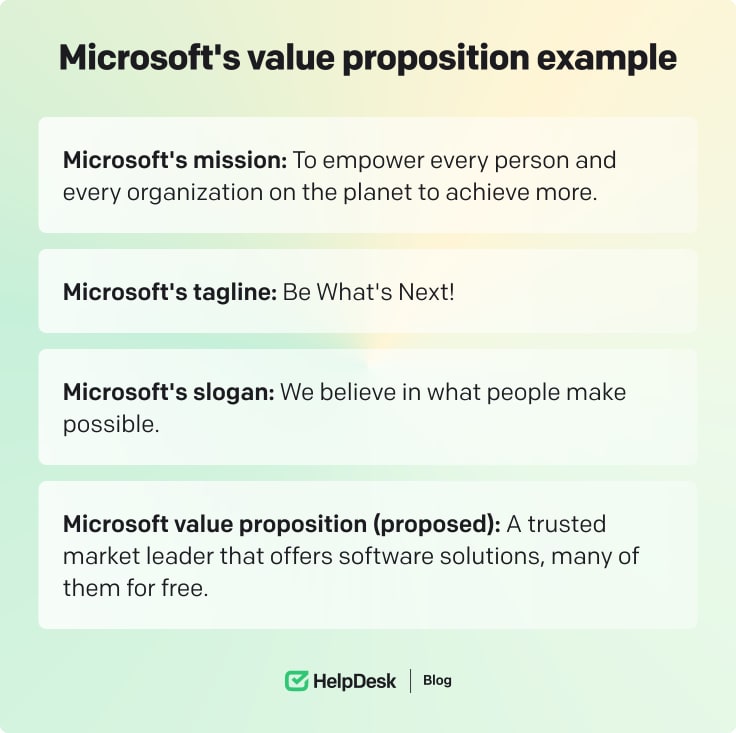
Simply put, the value proposition is more about the company’s proposition, emphasizing its unique aspect and what gives it a competitive edge. A great value proposition helps to differentiate a business and attract customers.
The importance of a value proposition
A value proposition can compel customers to learn more about the products and eventually purchase them.
The key reasons why a value proposition is crucial include:
-
Attract customers: A compelling value proposition smartly communicates why the product is the best pick. It targets the potential needs or pain points of customers.
-
Better product value communication: Before customers read lengthy product descriptions, value proposition helps them understand what value the product brings and what sets it apart from competitors.
-
Brand recognition: A compelling value proposition makes a brand shine over its competitors. Customers find it more valuable than competitors with weak value propositions. So, if you ensure a consistent and strong value proposition, it improves brand recognition.
-
Sales increase: A great value proposition is directly linked to sales increase. There are two reasons for that. First, a value proposition attracts customers to make a purchase. Second, customers find the brand more reliable.
-
Customer loyalty: A value proposition communicates a product’s or service’s benefits and value.
Elements of a great value proposition
Let’s explore a few essential elements when crafting a great value proposition.
Clear & compelling
It should be clear, concise, and compelling. Customers should be able to read and understand instantly. The word choice, text length, and attractiveness must be balanced.
Pinpoint target customer needs
It should identify the target customer and their needs. If it succeeds, the existing customers will become more engaged, explore further, and purchase.
Highlight unique benefits
It should highlight the product’s unique benefits and advantages and clarify why it’s better than competitors.
Evidence and social proof
It should be supported by evidence and social proof. It could be through reviews, testimonials, or case studies from satisfied customers.
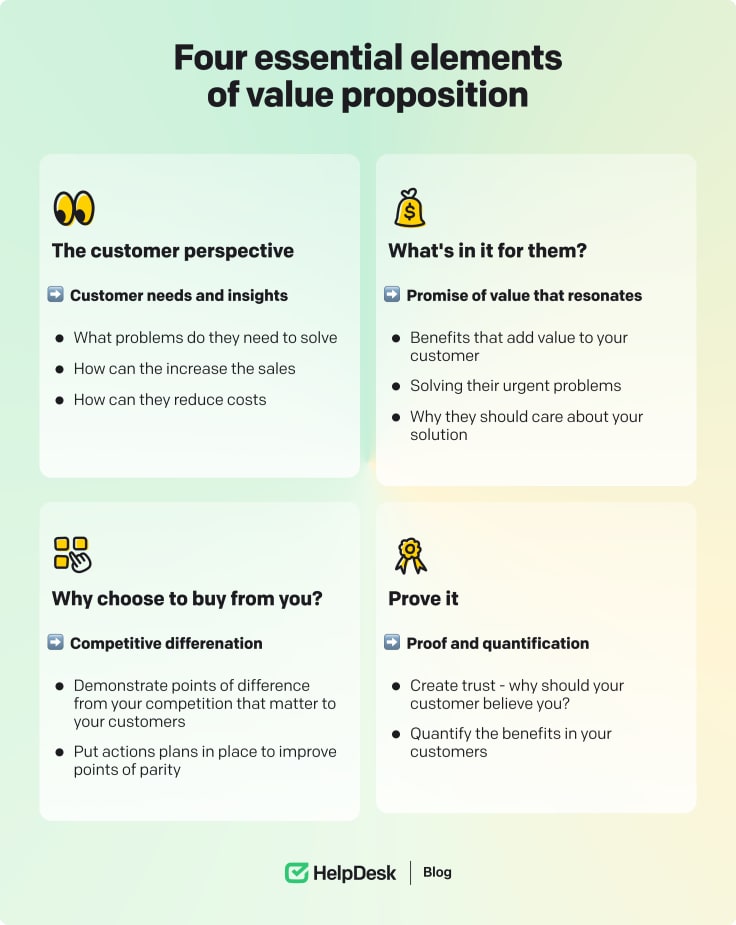
Creating a strong value proposition
It’s more than just thinking for a few minutes and writing a 2-3 sentence description. It requires strategic planning, proper awareness of customers and competitors, and well-execution of each word to make it solid and compelling.
Understand the target audience and their needs
It’s the first thing to consider when creating a value proposition. Your product may have an audience from different age groups with other priorities.
For example, consider that you have created a fitness app to offer personalized workout plans. Your ideal audience is:
-
Fitness enthusiasts who prioritize routine advanced workouts and proper tracking.
-
Beginners who need guidance and motivation in exercises.
-
Busy parents who want to do quick workouts from home.
-
Budget-concerned users who want low-cost or free apps for fitness.
Each of the above audience bases requires customized marketing content to attract them to your service. However, you should start by understanding your target audience and their needs.
Secondly, you must thoroughly analyze how your competitors target the same audience. Here, you can also use web audience searcher tools.
You can share a keyword like “fitness app” and get the audience search, such as gender demographics, number of searches, etc. Similarly, you can use such apps to analyze competitor sites and break down their audience by age, location, sex, etc.
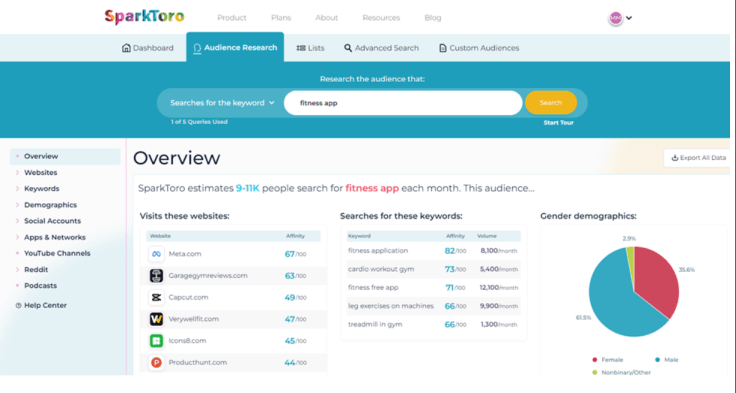
Identify the unique benefits and advantages of your product
Now that you know your target audience and their unique needs, the next step is to identify your product’s unique benefits and advantages. For example, if you offer CRM software, you should be clear about the benefits of CRM systems for businesses.
You should list all the key benefits your product/service offers to identify benefits. For that, you can answer questions like:
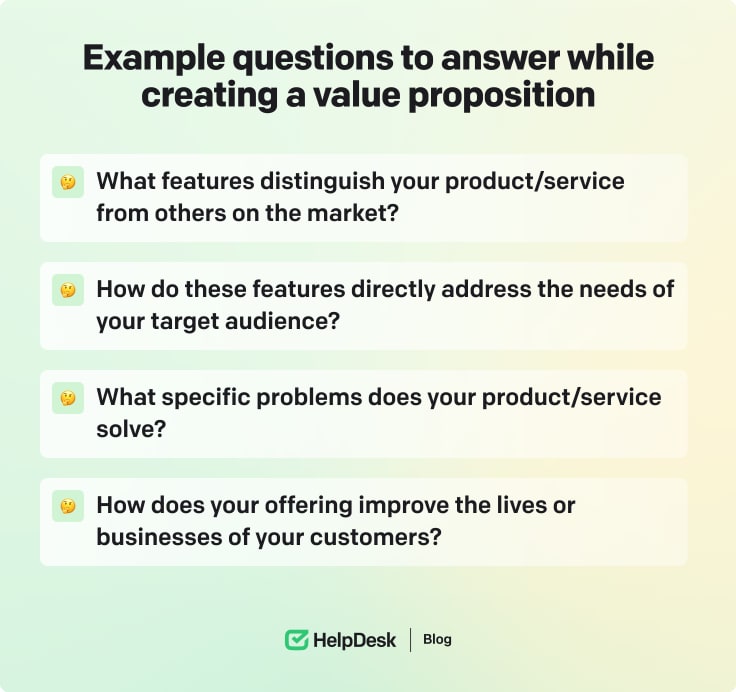
Use clear and concise language to communicate
A value proposition is short (2-3 sentences), where every word you use matters and must reflect something valuable to customers. The target is to create a unique value proposition that uses clear and concise language.
Avoid using hype words like “best fitness app” or similar ones. These words are prevalent nowadays and don’t cast an impactful impression. Therefore, your focus should be on using words that reflect your product’s benefits or unique value.
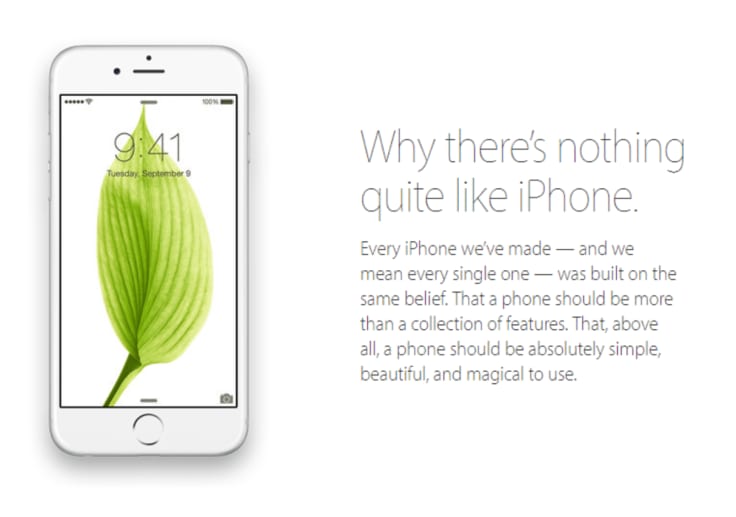
Use a value proposition template to organize thoughts
Value proposition ideas cannot just pop up immediately once you have shortlisted the target audience and the unique aspects of your products. A template can serve as a guide that can help you organize your thoughts effectively.
You can print out any value proposition template you like, use it to organize your thoughts and generate great value proposition ideas.
Value proposition templates
Many value proposition templates help you create a strong value proposition. They provide a framework for identifying a product’s target audience, unique benefits, and advantages.
Consider the above fitness app example again. You have discovered that your target audience is busy professionals who like quick workouts at home. Users always like your app’s customizable workout durations.
So, how do you make the connection and craft a compelling value proposition? That’s where templates can help.
Template #1 Geoffrey Moore’s Value Positioning Statement
Geoffrey Moore’s Value Positioning Statement was first introduced in his book Crossing the Chasm. Now, it’s used by dozens of Fortune 500 companies.

This typical benefit-oriented value proposition statement gives customers a compelling reason to try the product.
Example: For busy professionals who lack time for fitness, our app offers quick, customizable workouts that fit seamlessly into your daily routine, helping you stay active and healthy.
Template #2 Steve Blank’s XYZ Statement
Steve Blank’s XYZ Statement provides a shorter template to organize your thoughts.

This template addresses the customer’s pain point to capture their attention and convince them to try the product. However, it focuses on creating a concise yet meaningful value proposition statement.
Example: We help busy professionals stay fit by offering quick, customizable workouts tailored to their schedules.
Template #3 emotional appeal
This template targets the emotion and experience rather than the feature or benefit.
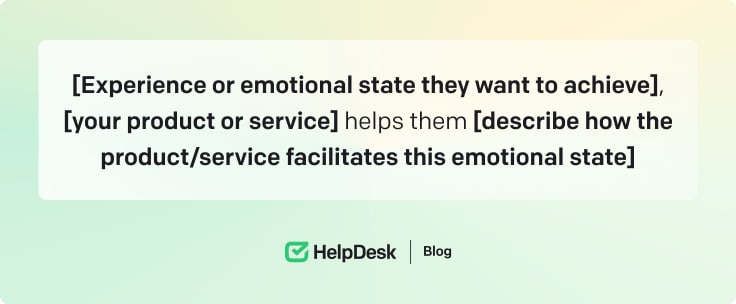
This template tries to connect with customers personally and make them emotionally connect with the product.
Example: Imagine feeling energized and confident daily, knowing you have taken care of your fitness in just a few minutes. Our app helps you reclaim your time and achieve your health goals so you can feel proud and accomplished no matter how busy life gets.
Template #4 testimonial template
As the name implies, a testimonial template presents the experience of existing users to build credibility and raise the trust of new customers.
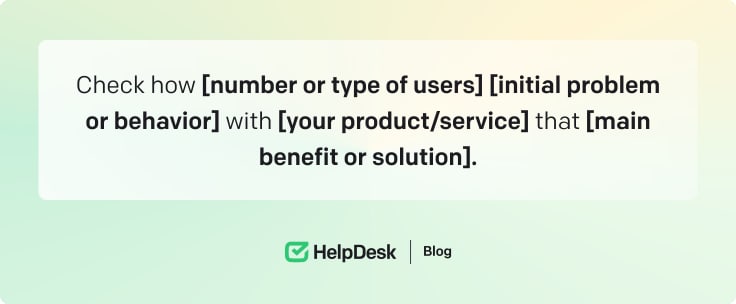
This template increases the authenticity of the product/service and gives customers the trust to try it.
Example: See how thousands of busy professionals stay fit with our app that offers quick, personalized workouts.
Examples of effective value propositions
Companies that know the importance of a value proposition are leveraging it wherever possible.
Let’s talk about a few companies and see their value proposition strategies:
1. Netflix
Netflix’s value proposition is to provide its customers with various TV shows and movies. It offers an extensive library of films, TV series, original content, and more than a dozen genres.
When you visit its website, you see a concise but compelling value proposition:
“Unlimited movies, TV shows, and more”
This value proposition is short but does the job perfectly. It attracts users to subscribe to Netflix to get an all-in-one platform to watch movies, shows, and more.

Netflix’s value proposition extends to other areas of its website as well. For example, the below image shows how it convinces new potential customers to subscribe by giving them more reasons to join the platform.

2. Amazon
Amazon’s value proposition is to provide fast and convenient delivery of products to its customers. It provides an all-in-one platform to order products from various categories, such as electronics, books, groceries, and more.
If you visit the Amazon website, you’ll see multiple concise value propositions. Since it’s back to school, we see the “Most-loved college finds under $25.” So, if you want to purchase college-related essentials, you’ll be attracted to click on it.
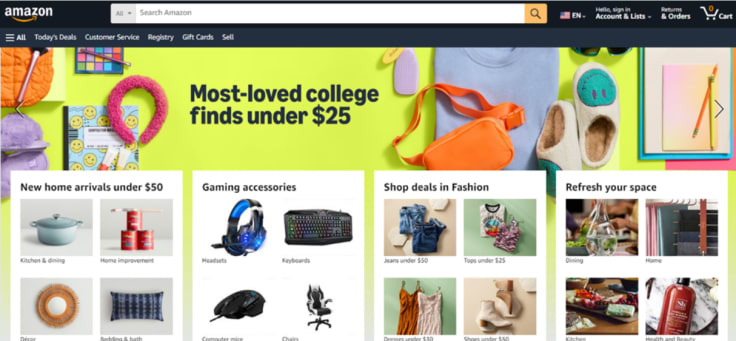
Besides that, the Amazon website home screen is full of different short value propositions, such as “Have more fun with family,” “Toys under $25,” “New home arrivals under $50,” and similar ones.
3. Warby Parker
Warby Parker’s value proposition is to provide affordable and stylish eyeglasses to its customers. When you visit its website, the first value proposition you see is “four frames for free, without leaving home.”
Many customers hesitate to order eyeglasses online because they need to know how the glasses will look on their faces. Warby Parker offers a value proposition to tackle that: five frames for free home delivery. This immediately grabs customer attention.

Secondly, another of Warby Parker’s prominent value proposition examples is “Free Shipping And Free 30-Day Returns.” This gives customers the confidence that they can order and return quickly if the glasses do not suit their face.
The Value Proposition Canvas
The Value Proposition Canvas is a visual framework popularized by Strategyzer. It assists in creating a great value proposition, makes it easy to understand customers’ needs, and ensures that you know precisely what your customers want.
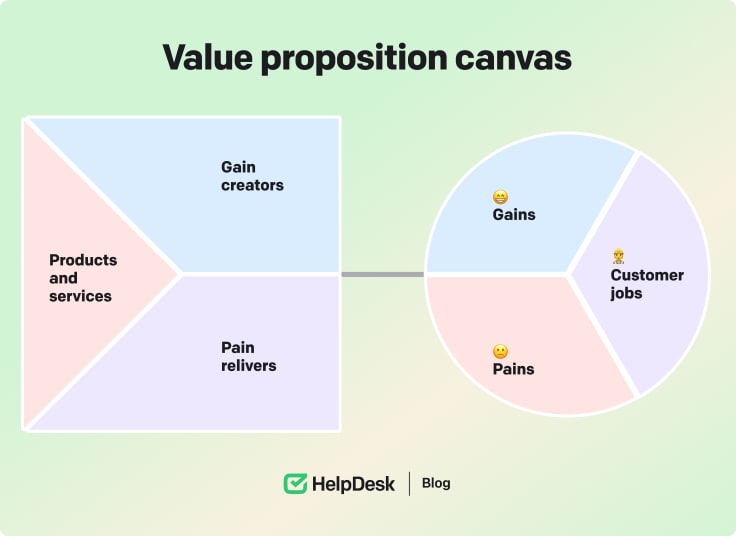
The Value Proposition Canvas consists of two main components, such as “Customer segment” and “Value m.” The details of both these components are as follows:
1. Customer segment
The customer segment part of the canvas is designed to help understand your customer’s needs. It includes research on three elements:
A. Customer jobs
You should pinpoint what your customers want to accomplish. Are they looking for customized home workouts, accessible virtual gym trainers, or workout activity tracking? You should address both their practical and emotional needs.
B. Pains
You should look for customers’ pain points when doing the above jobs. These represent the obstacles and negative experiences customers face. Are they struggling with finding the right workout guide, expensive trainers, time constraints, and more? So, you should identify all the challenges/pains of your target customers.
How do we identify customer pain points? Learn this through our article on the HelpDesk blog. 🚀

C. Gains
You should identify the gains or positive outcomes customers desire using your product/service. It can be professional-level homework, proper tracking of workout activities, and more. In short, you have to shortlist what benefits customers want from your product/service.
2. Value map
The value map part of the canvas is about brainstorming how your product/service addresses the customer’s jobs, pains, and gains. It also includes three elements:
A. Products and services
You should list all your products and services that help customers complete jobs. It can include all the apps and workout plans you offer.
B. Pain relievers
After listing all your products and services, you must pinpoint your product’s features and unique aspects that relieve customer pain. This can be customized workout schedules, virtual 3D trainers, autonomous workout tracking, and more. So, you have to list all your offerings that relieve pain.
C. Gain creators
You should list points reflecting how your product enhances the customer’s life. They should match the positive outcomes customers want to achieve using your product. It can be a low-cost yet feature-rich service compared to competitors.
That’s it! This way, a value proposition canvas helps to brainstorm customer needs and then interlinks them with your product’s unique aspects. Once done, you’ll be better positioned to craft a compelling value proposition and see promising results.
Writing a unique value proposition
As discussed above, when writing a unique value proposition, your prerequisite is to:
-
Understand the target audience and their needs.
-
Identify the unique benefits and advantages of your product/service.
-
Use a value proposition template to organize thoughts.
Once you have completed the above prerequisites, the main job is to focus on writing. Before that, let’s clarify the value proposition formula.
Value proposition formula
The typical value proposition formula is:
Value proposition = [adjective] [product/service] for [aspiration]
-
Adjective = Unique quality of your product/service.
-
Product = Specific offers of your product/service.
-
Aspiration = Goal/outcome your customers can achieve.
This formula is smart enough to fit almost any business. Here are a few value proposition example contents of brands using the exact or similar formula:
-
Domino’s pizza: “Fresh, hot pizza delivered to your door in 30 minutes or less — or it’s free.”
-
Disney theme parks: “Creating magical experiences for guests of all ages through immersive storytelling and high-quality execution.”
-
Dropbox: “Safely store and share your files from multiple devices with Dropbox, the secure cloud storage solution.”
All these value proposition examples position their products as the path to a joyful life. If you feel confused with this proposition formula, you can use any alternative template to craft the value proposition.
Write a value proposition with the right tone and word choice
Now comes the important part — writing the value proposition. The information we have discussed may have overwhelmed you with many concepts to consider while writing. However, your tone and word choice are the key to writing a strong value proposition.
Here are valuable, useful tips that can help you write a compelling value proposition:
-
Check your competitors’ value propositions: Begin by exploring your competitors’ value propositions. Understand how they position their products or services and identify any gaps or opportunities for differentiation.
-
Focus on benefits over features: Your focus should be on promoting your features’ benefits.
-
Use concise and clear language: Your value proposition should use concise and clear language that is easy for customers to read and understand within seconds. Avoid hype words, superlatives, jargon, and cliches in the value proposition.
-
Use boosters: If most of the benefits/features are the same between you and your competitors, you can use boosters, such as free shipping and no setup fee.
Testing your value proposition
Once you have crafted the value proposition, it’s time to test it. There are multiple ways to test its effectiveness, but the A/B test is the most common.
In the A/B test, you create two versions of the value proposition and present them to two different audience segments. You can show your value proposition on any channel, such as website homepage, product pages, email campaigns, social media posts, paid ads, and more.
Once posted, you should monitor different metrics, like conversion rates, engagement, feedback, and customer support metrics, to see which value proposition produces more fruitful results.
Creating multiple value propositions
Create multiple value propositions to target different customer segments. Each value proposition should be tailored to the specific needs and preferences of the target audience.
To better understand, let’s reconsider our fitness app value proposition example and look at the needs of different customer segments. It provides:
-
Customized workouts for busy professionals or stay-at-home moms.
-
Advanced training plans and progress tracking for fitness enthusiasts.
-
Educational content and guided exercises for beginners.
-
Low-impact exercises for seniors.
So, it’s impossible to create a single value proposition and use it to attract and manage the customer lifecycle of all types of users. You must create multiple value propositions that communicate tailored messages for the audience segment. You should use a value proposition template to help create various value propositions.
For example, a few proposed value propositions for the fitness app are as follows:
-
Busy professionals or stay-at-home moms: For busy professionals who lack time for fitness, our app offers quick, customizable workouts that fit seamlessly into your daily routine, helping you stay active and healthy.
-
Fitness enthusiasts: Our fitness app delivers personalized plans for fitness buffs seeking advanced training to help you progress faster.
-
Beginners: Unsure where to start and need guidance? Our fitness app is a user-friendly educational tool that provides simple, guided exercises and educational content, making it easy to start your fitness journey confidently.
-
Seniors: Empower your golden years with our fitness app’s gentle, low-impact workouts, designed to keep you moving, feeling great, and living life to the fullest — all while ensuring your safety and comfort.
Common mistakes to avoid
Considering the importance of value propositions, most businesses are trying to create strong ones to gain a competitive edge. However, not all companies gain the same benefits despite following the same value proposition examples.
The reason is that many businesses make common and unintentional mistakes that can compromise the effectiveness of their value proposition. In this perspective, below are a few common mistakes to avoid:
1. Focusing features over benefits
Many times, the value proposition highlights features over benefits. In today’s competitive era, many competitors have the same features, so promoting your product or service just by features is only sometimes effective.
You should focus more on the benefits, as customers seek a product to solve their problems. For example, HelpDesk is a well-known help desk system that helps teams optimize ticket management and customer support queries. Its feature-based vs. benefits-based value proposition are:
-
Featured-based: An advanced ticket management tool to manage customer messages and streamline customer support.
-
Benefits-based: HelpDesk’s smart ticket management, automated responses, and insightful reports simplify support and resolve issues faster, boosting your team’s efficiency and enhancing customer satisfaction.
The benefits-based value proposition looks more compelling and unique than the featured-based one.
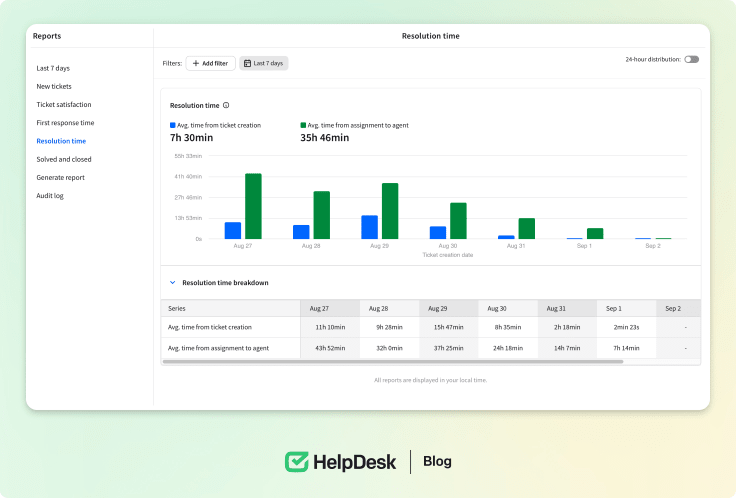
2. Using the same value proposition for all customers
Sometimes, a single product may have different customer segments, each with unique needs. However, some businesses use the same value proposition for all customers. This approach will only appeal to a limited number of customers, as others will see the business as something other than the right fit for them. Therefore, creating multiple value propositions to address your customers’ needs is essential.
3. Emphasis on price overvalue
Some brands assume that the low price will attract the customer the most. It can sometimes work, but only sometimes. Today’s customers are more concerned about quality over price. So, your value proposition should emphasize value over price. This will help customers understand what value they’ll get from your product. Afterward, they’ll be willing to pay a bit extra for the value you offer them.
4. Unclear or complex value proposition
A value proposition is a game of seconds. You get only a few seconds to grab the customer’s attention. However, if your value proposition is unclear or complex, it will have minimal impact on your customers.
Consider the below two value proposition examples:
-
Our fitness app provides comprehensive features, including personalized workout plans, a detailed calorie tracker, and integration with various fitness devices. These features aim to optimize your exercise routine and health metrics.
-
Reach your fitness goals faster with our app’s personalized workouts and easy progress tracking, all designed to fit seamlessly into your routine and keep you motivated.
The first is complex and challenging to understand, while the second is concise, clear, and compelling. Ensure your value proposition is strong and unpersuasive.
Summary
Crafting a solid value proposition holds the power to make a meaningful difference. It communicates the exclusive advantages and worth that customers can gain from choosing your products or services. Building captivating and resilient value propositions is crucial for attracting customers and boosting sales.
Developing a solid value proposition is an ongoing process. It demands continual refinement until you start witnessing positive outcomes. However, it’s vital to take action today, create several value proposition examples, and progressively improve your value proposition content using data-driven insights. Embracing this approach will lead to compelling value propositions that resonate with your audience.


